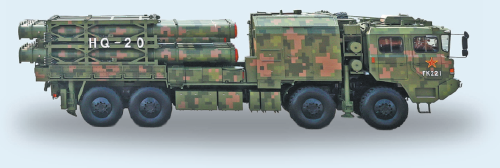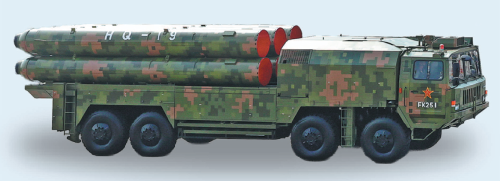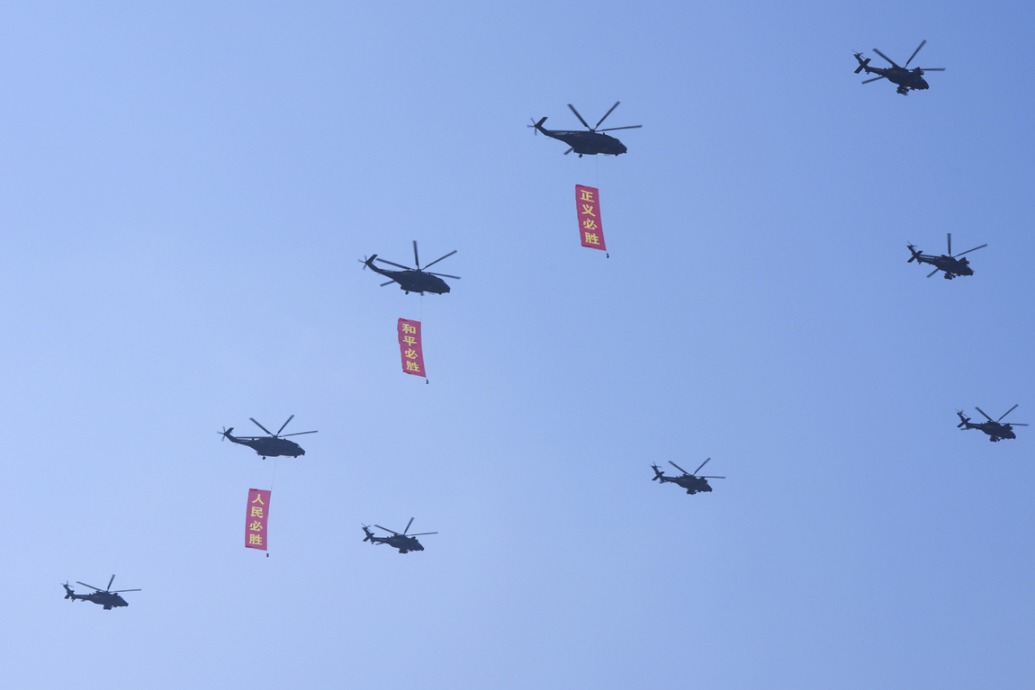Sky's no limit
PLA parades its latest world-class military equipment in demonstration of nation's growing superiority in the air


HQ-20 air-defense missile system
Airspace assignments
The responsibility of safeguarding China's airspace is not placed solely on combat aircraft. Ground-based air-defense and anti-ballistic missile systems are another significant component in defending against incoming air threats.
To display its multistage, multilayer air and missile defense network, the Air Force brought six types of advanced systems to the parade.
The occasion marked the public debut of the HQ-20 and HQ-22A anti-aircraft missile system and the HQ-29 exoatmospheric missile interception system. Another three types, the HQ-11, HQ-9C and HQ-19, have been included in Chinese defense shows in recent years.
According to Zhang, the HQ-11, HQ-20 and HQ-22A are primarily tasked with engaging with conventional threats, and can effectively intercept fixed-wing aircraft, drones, cruise missiles, and even short- and medium-range ballistic missiles.

HQ-19 air-defense missile system
The HQ-9C is tasked to protect key assets from incoming planes and can also perform terminal low-altitude missile interception tasks within the atmosphere. Its interception altitude is expected to be several tens of kilometers, he said.
The HQ-19, unveiled for the first time in November last year, has been designed for regional protection against ballistic missiles at the high-altitude terminal phase, and is characterized as having large coverage and strong countermeasures. These traits make it part of the backbone of China's homeland air defense and missile interception operations, according to Zhang.
"The combination of the HQ-9 series and the HQ-19 will form a powerful, multilayer network to keep our important assets safe from threats from the air and exoatmosphere," the observer said.
Wang Yanan said that in addition to conventional ballistic missiles, the HQ-19 is able to defend against hypersonic glide vehicle weapons that have extremely fast speed and supreme agility. As a cutting-edge piece of strike hardware, the hypersonic glide vehicle weapon is virtually impossible to intercept by previous air-defense missiles and poses a significant threat to high-value assets.
Another of China's arsenal making its public debut at the parade was the HQ-29, the largest surface-to-air missile system China has ever shown. It is likely a mid-course interceptor designed to engage threats outside the Earth's atmosphere.
What appeared in the parade were the system's six-axle twin-canister mobile launch vehicles, which are also likely to have at least one integrated radar and command vehicle for each unit.
Analysts have pointed to its large-diameter launch canisters and dual-missile configuration as possible indicators of a design meant to boost interception odds against fast and maneuvering ballistic targets.
Zhang said that the HQ-29 has further expanded the scope of China's missile defense operations.
"It is capable of intercepting ballistic missiles during their mid-course phase outside the atmosphere, before they descend toward their targets," he said.
"Notably, the HQ-29 can achieve mobile launches from wherever its launch vehicle can reach. That means its launch sites can be flexibly selected to address threats from different directions. In contrast, most of the current land-based mid-course missile defense systems are launched from silos, which leads to some constraints in their operations," he added.
Several laser and microwave weapon systems also took part in the parade, and were introduced as being suitable for counter-drone tasks.
zhaolei@chinadaily.com.cn





































